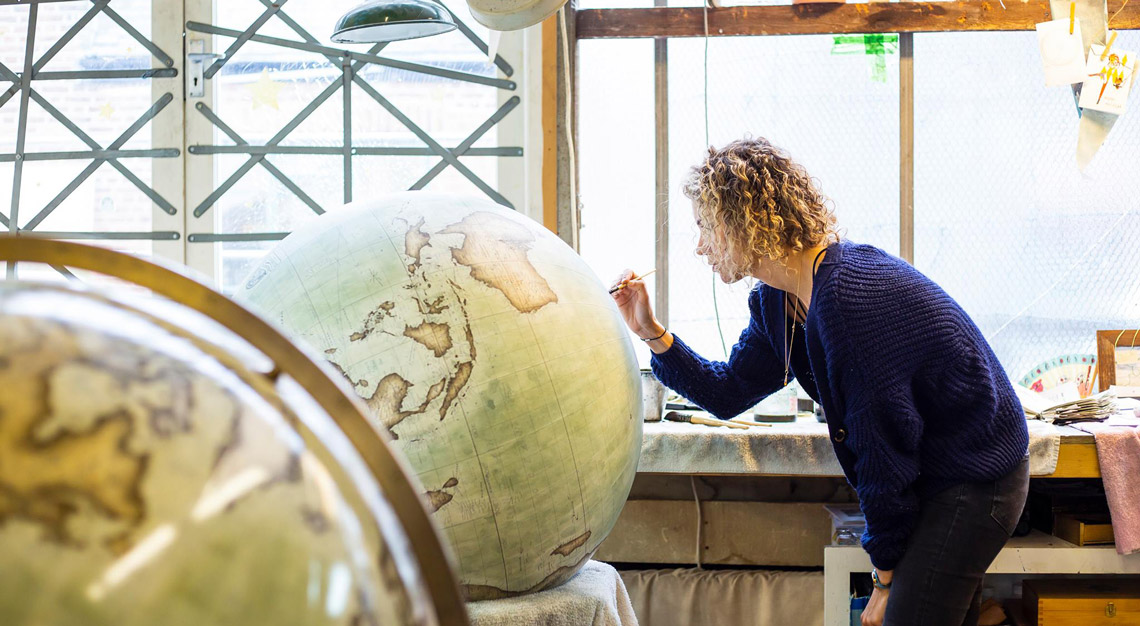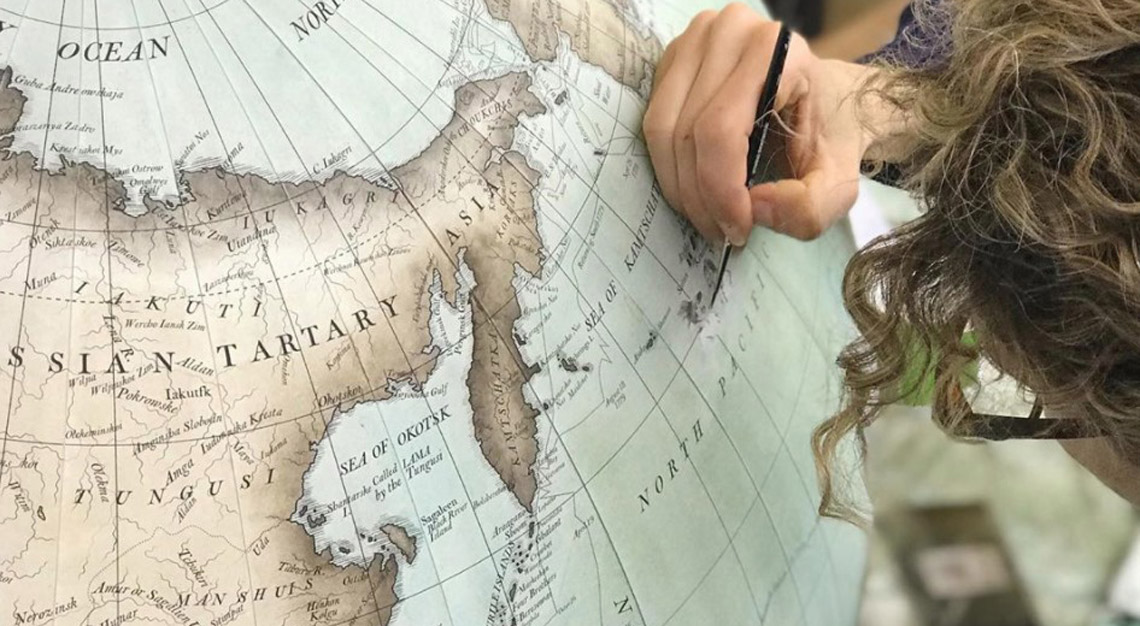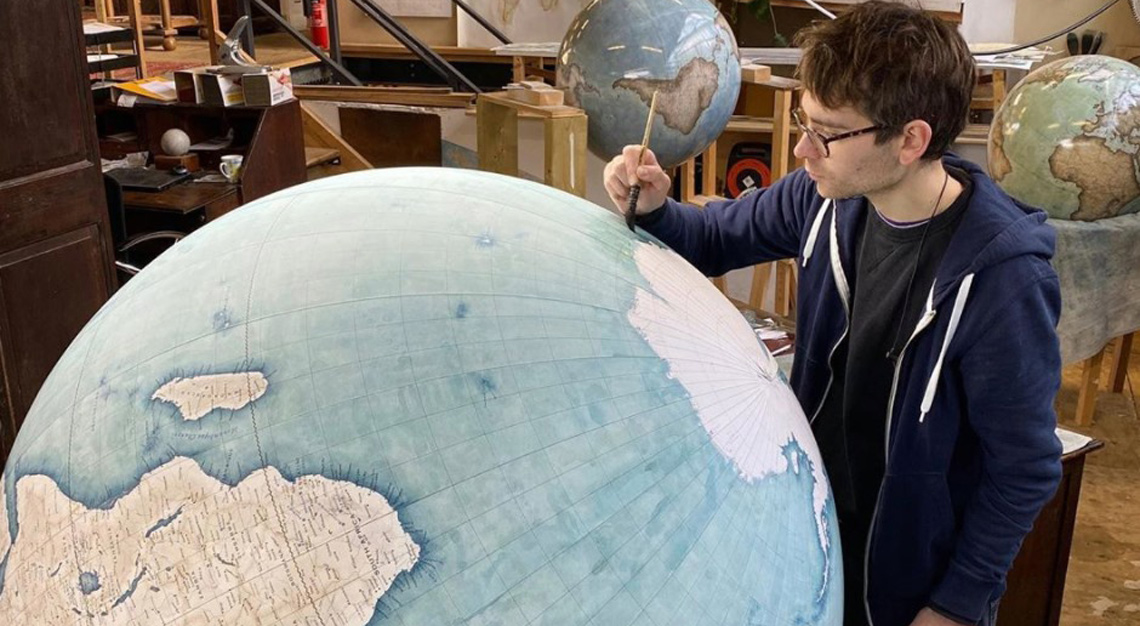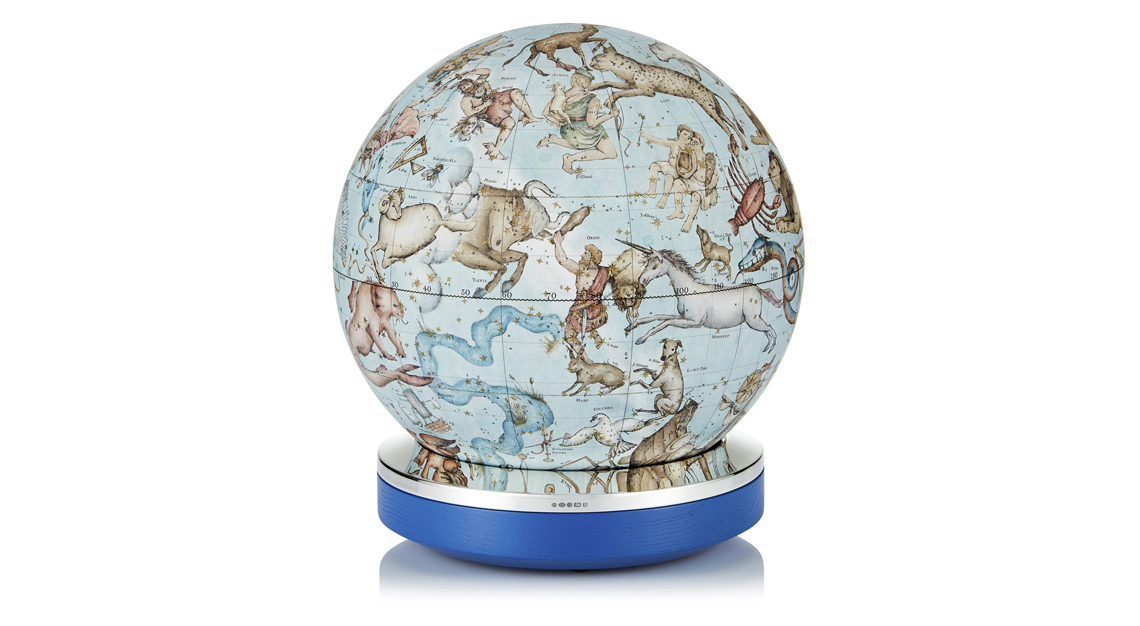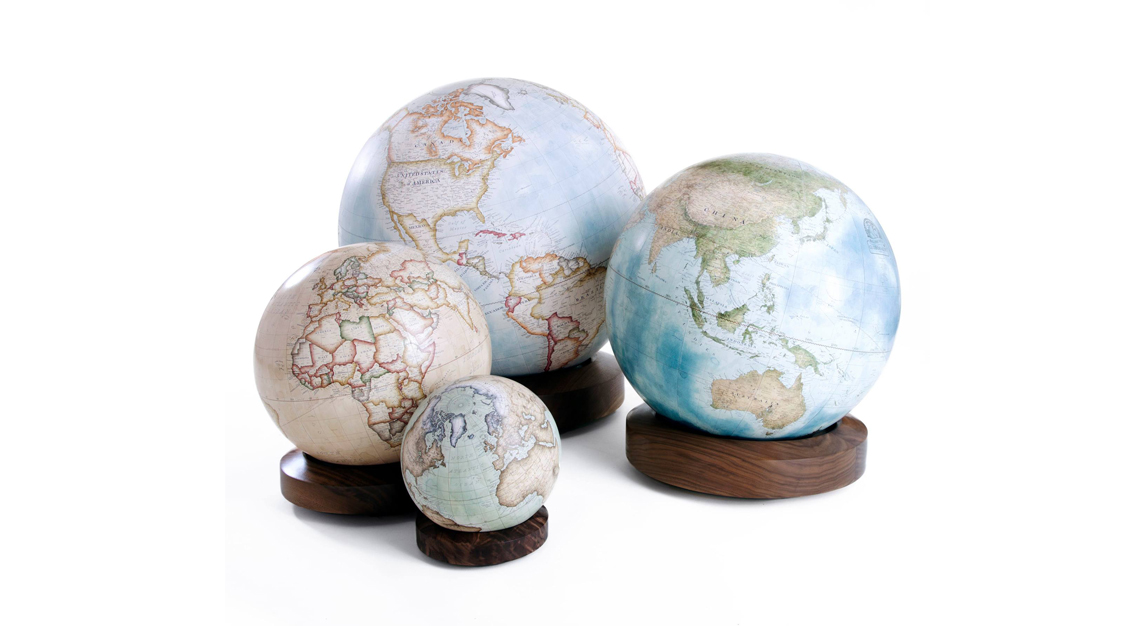Explore the world the old-fashioned way – by spinning a globe. Meet the craftsmen who are still producing globes by hand
Peter Bellerby was a property developer before he became a craftsman. In fact, the thought of becoming a globemaker never crossed his mind – until his father requested for a globe for his 80th birthday. What Bellerby had found on the market, however, weren’t to his liking, hence he decided to try his hand at making one himself.
A lesson to glean from that incident? Bellerby realised he was wrong to assume that the process of crafting a simple globe would take a mere three to four months – it took a lot longer. Picture this: a globe measuring more than four feet in diameter takes artisans almost a year to complete, an amount of time that might seem excessive in today’s fast-paced world. In fact, if you’d like to purchase a globe made completely from scratch for yourself, you’ll be advised to be very patient. Bellerby & Co., the globemaking company founded by Bellerby, is one of the very few remaining craftsmen that still makes globes by hand using meticulous, centuries-old techniques.
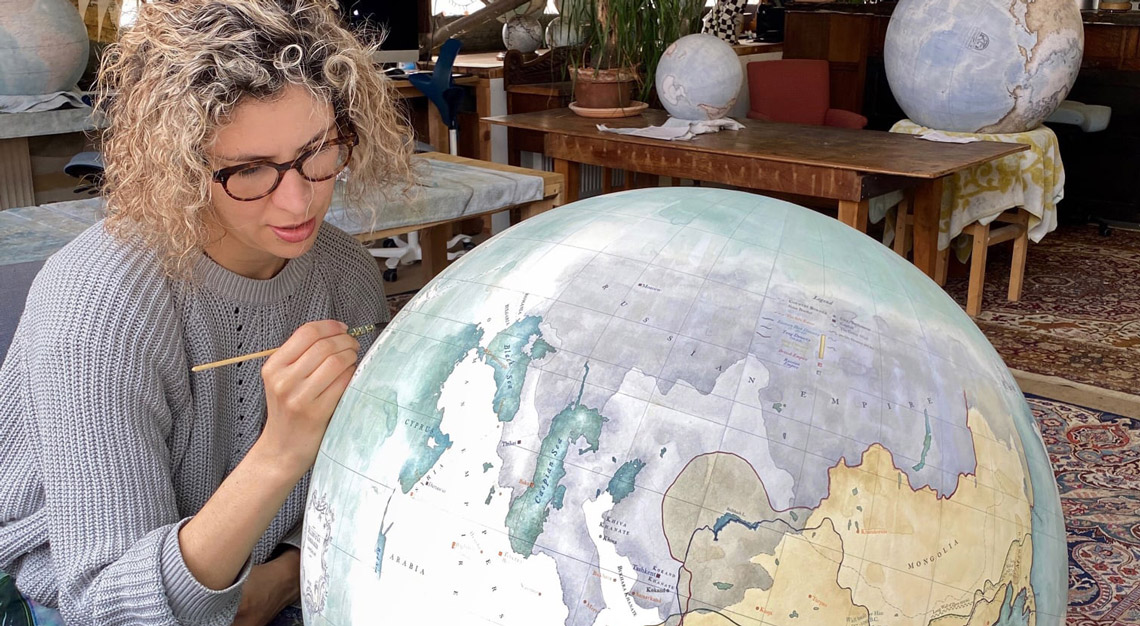
A few of these age-old techniques came from the Greeks themselves, who created some of the first globes in the world. But it wasn’t till the 1490s that geographer Martin Behaim produced the first terrestrial globe, albeit peppered with errors, including a distorted illustration of the African coast. Still, Behaim’s creation remains the oldest surviving globe of its kind in history, standing in all its glory at the German National Museum in Nuremberg today.
Over the decades, the art of globemaking has evolved, but many techniques still remain in place. More than 20 artisans can be seen working form Bellerby’s studio, from cartographers who come up with the gored maps (preferred map designs by clients who wish to highlight certain points of interest on the globe) to artists tasked with perfecting the details and helping bring each globe to life. Before the globe reaches its owner, it goes through the hands of at least six artists; they painstakingly illustrate the continents through shading, identifying coastlines and other geographic details in the process. The art, clearly, isn’t for everyone, and even Bellerby claimed to have learned the ropes for as long as two years before gaining his footing as a globemaker.
The studio, on average, produces about 750 globes each year, with prices starting at approximately £1,300 (S$3,400) for a mini desk globe to £44,500 (S$82,800) for the biggest model. Needless to say, Bellerby and his team of artisans have been responsible in making globemaking stay relevant today, especially in a modern world that relies on technology for geographical information. And in a period that sees most countries around the world living in isolation, spinning a globe is truly the safest bet for one to explore the entire world without leaving home.


